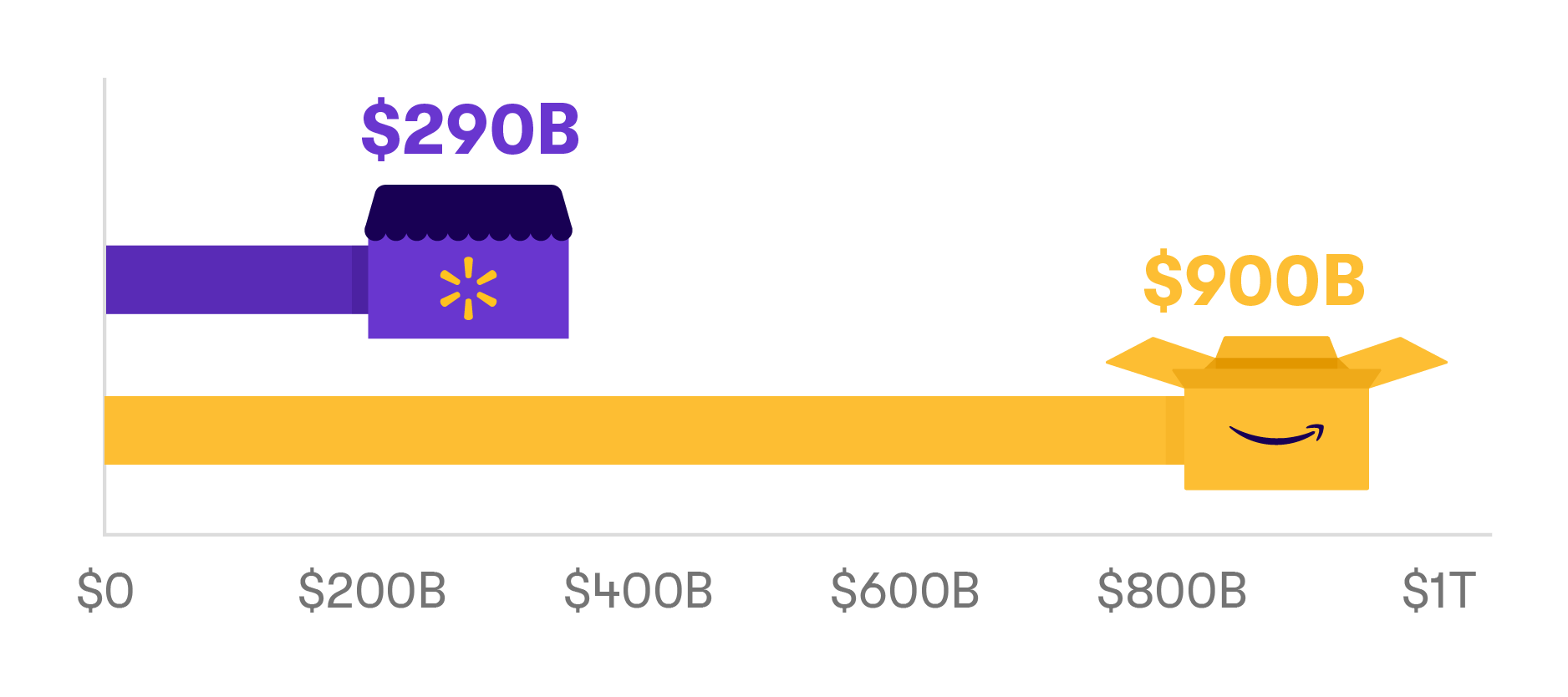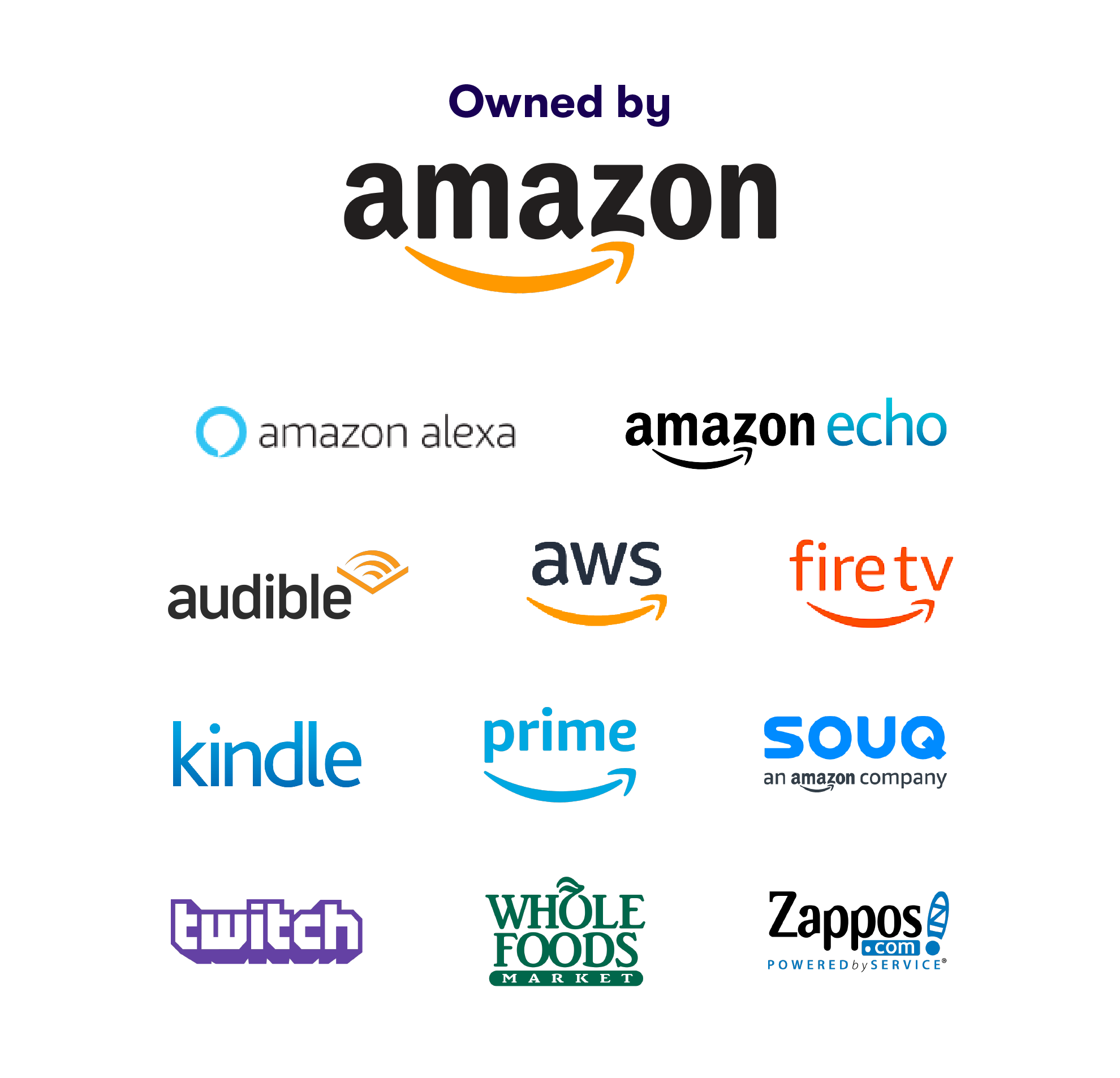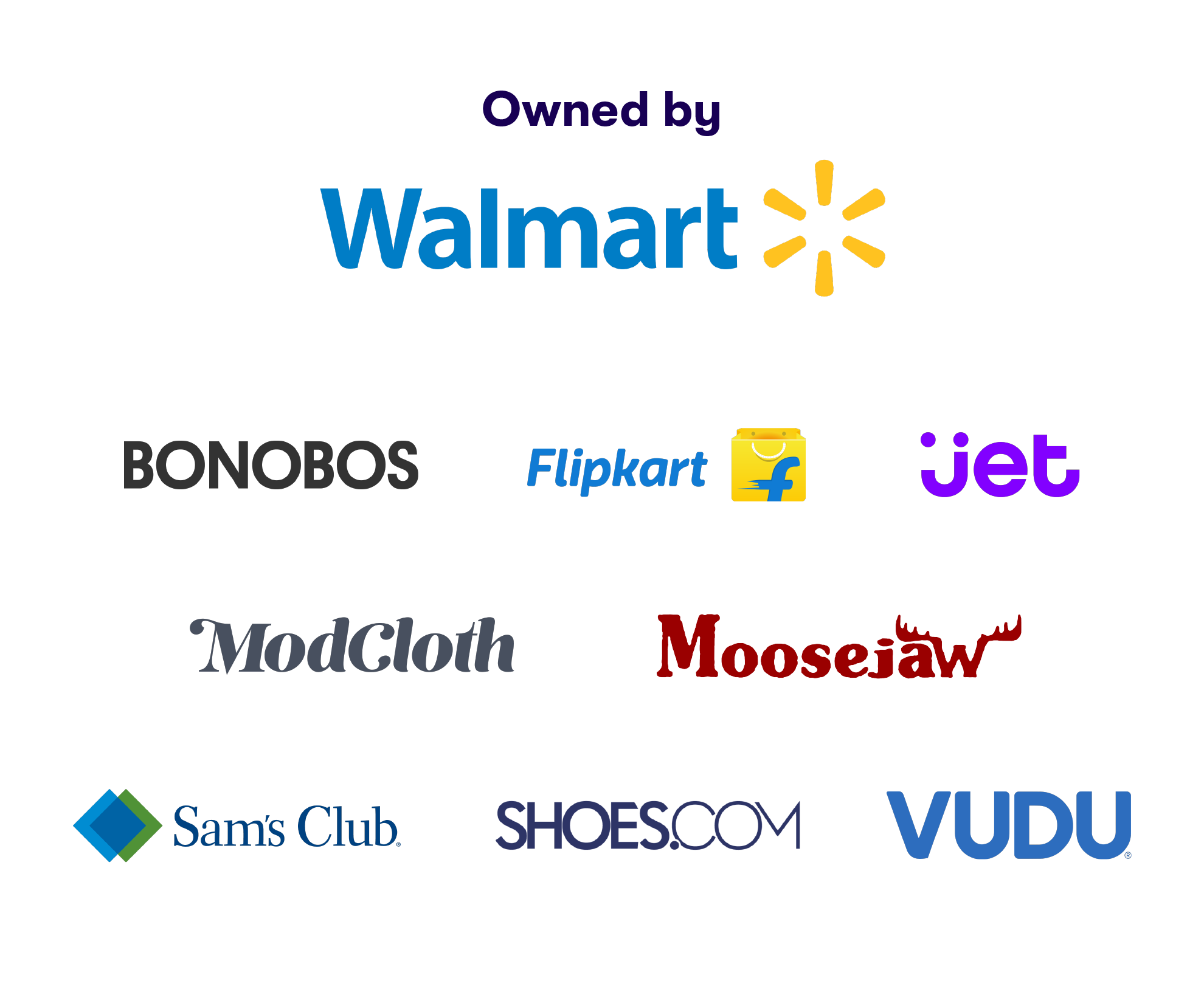Oct 22, 2018
Amazon vs. Walmart: Inside the Battle to Sell You Everything
Monster match-up: Who will win the war for your wallet?

Amazon and Walmart are the two titans of the retail world.
Together, they ring up nearly half-a-trillion dollars worth of sales—that’s more revenue each year than the next top five retailers combined, according to the National Retail Federation.
But one is the king of eCommerce, specializing in crunching consumer data and delivery logistics, while the other is a behemoth in the old world of bricks and mortar transactions, at home with shopping carts and Black Friday super deals.
Yet increasingly, Amazon and Walmart are going neck in neck for customers, each competing for the territory of the other. While Amazon has attempted to cross over into physical world sales, Walmart has invested heavily in its online presence.
Who will win the war for your wallet? We take a deeper look at both businesses, and you decide.
Amazon vs Walmart
Founders:
Amazon: Jeff Bezos
Walmart: Sam Walton
Year founded:

Amazon: 1994
Walmart: 1962
Market Cap:

Amazon: $900 billion
Walmart: $290 billion
Revenues:

Amazon: $178 billion
Walmart: $500 billion annually, as of fiscal year 2018
Number of employees:

Amazon: 566,000
Walmart: 1.5 million
Who owns what?

In addition to consumer-facing businesses such as Zappos, Twitch, and Whole Foods, Amazon owns a suite of tech businesses including cloud services company Amazon Web Services, membership services division Prime, and consumer electronics such as Alexa and Echo products, Kindle, and Fire.
Amazon also owns other e-commerce companies, including Souq.com, which specializes in retail sales in the Middle East.

Walmart owns numerous other retailers both in the US and around the globe, such as men’s fashion wear company Bonobos, online retailer Jet.com, and the membership-only wholesale warehouse chain Sam’s Club. It also owns e-Commerce company Flipkart, of India.
It also has a toe into the world of streaming media. The company announced plans to get into the binge-watching subscription television space with Vudu, in order to compete with Netflix, Amazon, and Hulu.
Amazon’s strengths
Amazon practically invented e-Commerce, and today controls nearly half of all online sales.
Two-thirds of all consumers in the U.S. have bought from Amazon and nearly one-third purchase from it at least once a month, according to reports. With the recent acquisition of the high-end grocery chain Whole Foods, Amazon has also planted a stake in the ground for physical world sales.
More than a million small businesses today also sell on the Amazon marketplace.
Amazon’s weaknesses
Other online retailers are gunning for its territory.
In 2016, Walmart purchased the online retailer Jet.com, in what analysts said was an attempt to compete directly with Amazon. Overseas, it also faces big competition from companies including e-commerce company Alibaba—which sells to 500 million consumers in China alone.
Walmart’s strengths
By sales volume, Walmart is the largest retailer in the nation, and nearly every American has shopped at Walmart, according to industry data. It specializes in the race to the bottom prices, by squeezing suppliers to offer the lowest cost merchandise they can possibly produce.
Walmart weaknesses
Every year, more consumers shop online, and Walmart has had to play catch up with its digital sales strategy. Its purchase of Jet.com for $3 billion in 2016, according to experts, demonstrated its intention not to be caught napping.
Meanwhile, Walmart estimates digital sales for the company will increase by 40% in 2018. Smaller superstores such as Costco and Target are nipping at its heels.
Want a piece of retail giants? You can invest in stocks and funds that focus on the business of retail on Stash.
*All product and company names are trademarks™ or registered®trademarks of their respective holders. Use of them does not imply any affiliation with or endorsement by them
Related Articles

15 Largest AI Companies in 2024

The 12 Largest Cannabis Companies in 2024

What Is a Traditional IRA?

Saving vs. Investing: 2 Ways to Reach Your Financial Goals

How To Invest in the S&P 500: A Beginner’s Guide for 2024

Stock Market Holidays 2024





